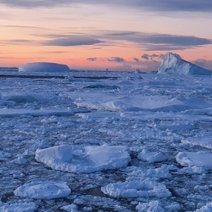Hypometabolism to survive the long polar night and subsequent successful return to light in the diatom Fragilariopsis cylindrus
N Joli, L Concia, K Mocaer, J Guterman, J Laude, [...] Y Schwab, M Babin, C Bowler
Authors
Nathalie Joli, Lorenzo Concia, Karel Mocaer, Julie Guterman, Juliette Laude, Sebastien Guerin, Theo Sciandra, Flavienne Bruyant, Ouardia Ait-Mohamed, Marine Beguin, Marie-Helene Forget, Clara Bourbousse, Thomas Lacour, Benjamin Bailleul, Charlotte Nef, Mireille Savoie, Jean-Eric Tremblay, Douglas A. Campbell, Johann Lavaud, Yannick Schwab, Marcel Babin, Chris Bowler
Summary
• Diatoms, the main eukaryotic phytoplankton of the polar marine regions, are essential for the maintenance of food chains specific to Arctic and Antarctic ecosystems, and are experiencing major disturbances under current climate change. As such, it is fundamental to understand the physiological mechanisms and associated molecular basis of their endurance during the long polar night.
• Here, using the polar diatom Fragilariopsis cylindrus, we report an integrative analysis combining transcriptomic, microscopic and biochemical approaches to shed light on the strategies used to survive the polar night.
• We reveal that in prolonged darkness, diatom cells enter a state of quiescence with reduced metabolic and transcriptional activity, during which no cell division occurs. We propose that minimal energy is provided by respiration and degradation of protein, carbohydrate and lipid stores and that homeostasis is maintained by autophagy in prolonged darkness. We also report internal structural changes that manifest the morphological acclimation of cells to darkness, including the appearance of a large vacuole.
• Our results further show that immediately following a return to light, diatom cells are able to use photoprotective mechanisms and rapidly resume photosynthesis, demonstrating the remarkable robustness of polar diatoms to prolonged darkness at low temperature.
New Phytol. 2023 Dec 14. doi : 10.1111/nph.19387


